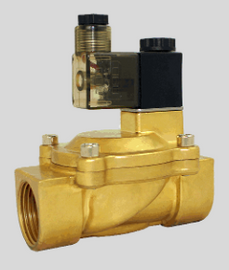STC 2W040- 3/8" NPT Solenoid Valve, Brass Body, 2-Way, Normally Closed
Brand : STC Valve
- SKU:
- 2W040-3/8
- Minimum Purchase:
- 1 unit
- Processing Time:
- 1 Days

STC Valve
STC 2W025- 1/4" NPT Solenoid Valve, Brass Body, 2-Way, Normally Closed
STC 2W025- 1/4" Brass, Solenoid Valve Technical Specs Orifice 2.5mm CV 0.23 Valve Type 2 Way

STC Valve
STC 2W160- 3/8" NPT Solenoid Valve, Brass Body, 2-Way, Normally Closed, Direct Lift Diaphragm
STC 2W160- 3/8" Solenoid Valve Technical Specs Orifice 16mm CV 4.8 Valve Type 2 Way Action

STC Valve
STC 2S050- 3/8" NPT Solenoid Valve, Stainless Steel Body, 2-Way, Normally Closed
STC 2S050- 3/8" Stainless Steel, Solenoid Valve Technical Specs Orifice 5mm CV 1 Valve Type 2

STC Valve
STC 2V130- 3/8" NPT Solenoid Valve, Brass Body, 2-Way, Normally Closed, Pilot-Operated Diaphragm
STC 2V130- 3/8" Solenoid Valve Technical Specs Orifice 13mm CV 4.8 Valve Type 2 Way Action

STC Valve
STC 2W035- 1/4" NPT Solenoid Valve, Brass Body, 2-Way, Normally Closed
STC 2W035- 1/4" Brass, Solenoid Valve Technical Specs Orifice 3.5mm CV 0.5 Valve Type 2 Way

 888-825-8800
888-825-8800

